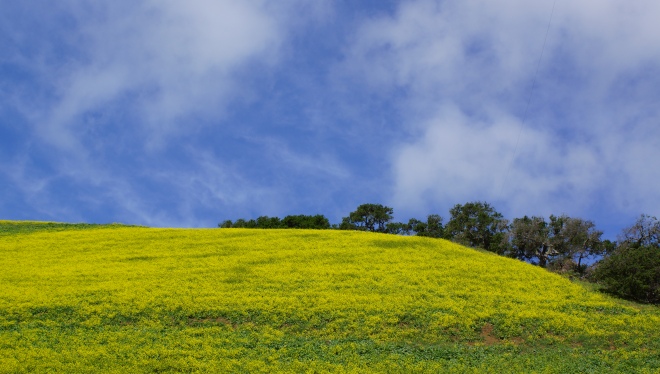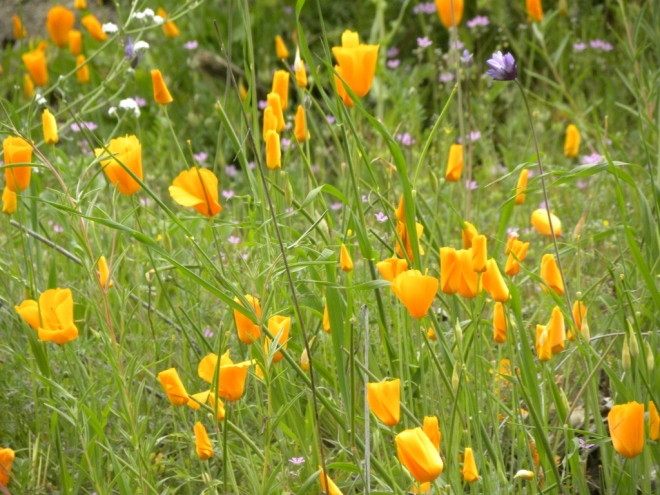
Ethan and “Little P” Planted Olallieberries at Grieb Ranch
Olallieberries are classified as a type of blackberry, and a cross between a “Youngberry” and a “Loganberry”. Olallieberries are shiny and full of juices that most would consider tart. Jams, pies and even wine can all be made from Olallieberries. If you live in U.S. Department of Agriculture plant hardiness zones 7 through 9, you can plant a patch of Olallieberry bushes in your backyard. Keep in mind, however, that it takes two years from the date of planting before edible berries make their appearance.
How to Plant an Olallieberry Bush
- Block off a 5- by 18-foot space in a sunny location for growing your olallieberry bush. Olallieberries will tolerate a little bit of shade, but they prefer full sun.
- Test the soil in the area you want to plant the Olallieberries. Ideal soil should have a pH between 5.5 and 7. You can get a soil test kit at your local county extension office or from a gardening center. According to Oregon State University, you can add lime to the soil if the soil is too acidic.
- Erect a trellis at the back of your blocked off space. As the Olallieberries grow, they will need the support of the trellis.
- Work manure in the soil before planting at a rate of 2 cubic yards for every 100 square feet of space. If you don’t have manure, you can use compost.
- Dig out a hole to place your Olallieberry root ball in. The hole should be slightly bigger than the root ball. Wet the ground in the hole so that it is moist and then plant the root ball. Use some of the soil you removed to fill the space surrounding the root ball.
- Water the Olalliberry bush with 1 inch of water one time each week.
- Check frequently for weeds and remove them immediately.
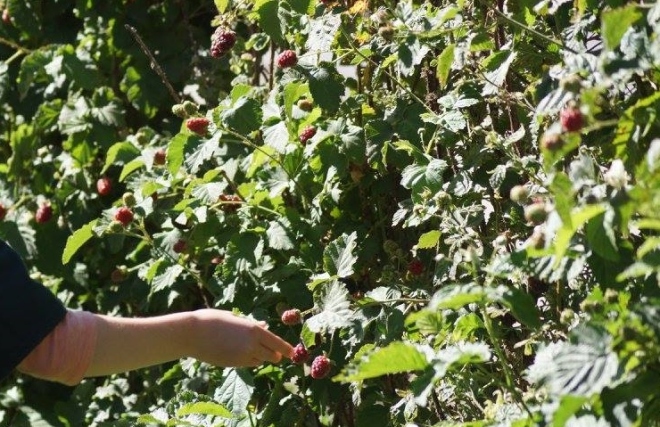
Barbara the rooster lady gave Connie plants in 2016. She got her plants from her Father who got the original stock in 1956 when he bought his first house. Every time the family moved he/they took plants including the Olallieberry bushes. Now after many moves Barbara has passed the Olallieberries on to Connie and they were planted at Grieb Ranch.
Yummy Berry Sauce as a Topping for Cake or Ice Cream.
Ingredients:
1 cup berries (Strawberry or Olallieberry)
1 cup water
1 cup sugar(or less to taste)
* * *
2 Tbls Cornstarch
2 Tbls water
Directions:
Combine fruit, water and sugar ingredients in sauce pan and bring to a boil. Mix cornstarch with the 2 Tbls water in a small bowl. Add cornstarch mixture to boiling fruit mixture and stir until thickened. Remove from heat and cool slightly. Add 2-3 cups fresh berries to sauce and mix gently.
Pour over your favorite ice cream or cake. Yummmmy!


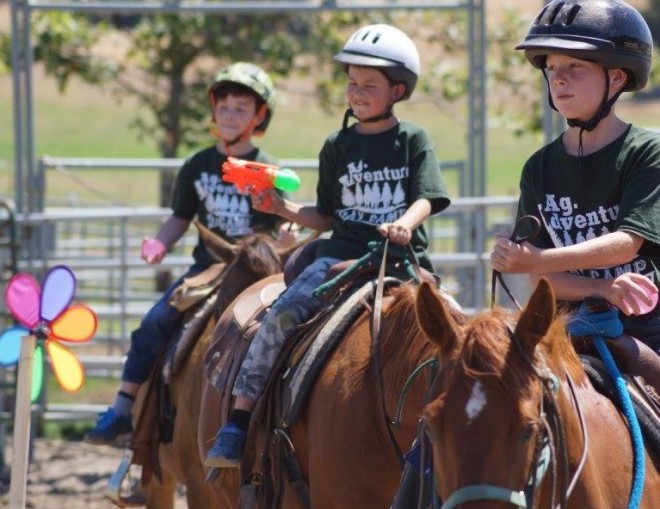
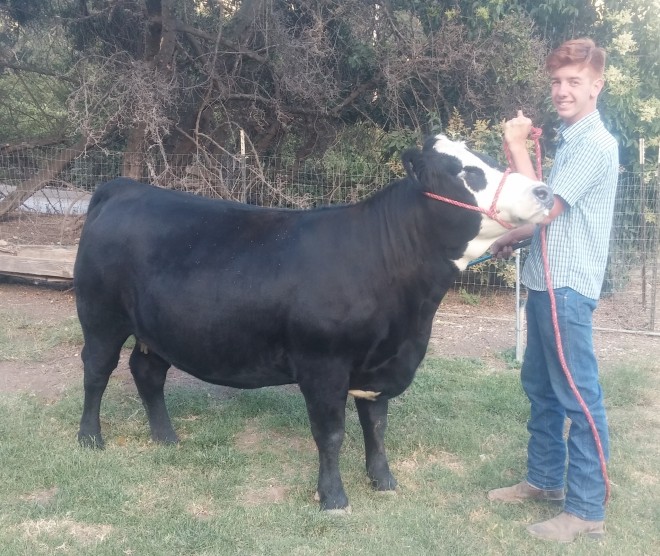
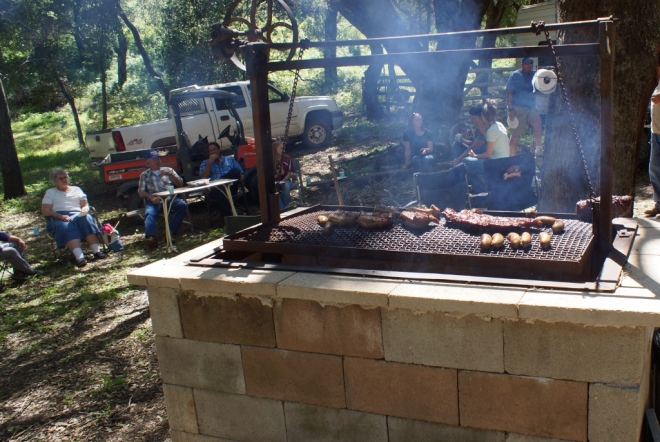

 Roasted Suckling Pigs
Roasted Suckling Pigs


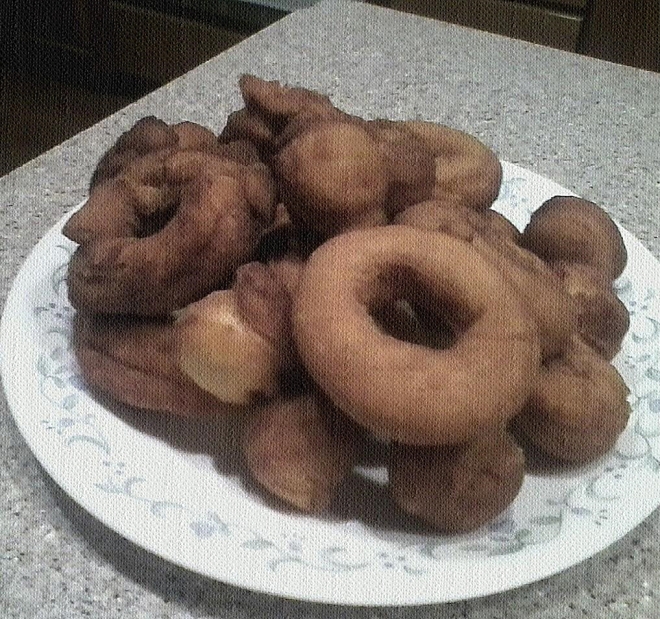
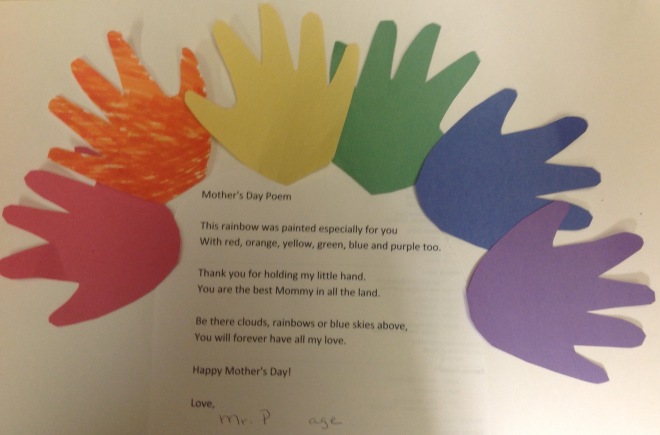

 As an 8th grader, he joined the Arroyo Grande Men’s Horseshoe Team. They played other men’s teams from San Luis Obispo, Atascadero, Paso Robles, and Santa Maria. In high school he was the champion horseshoe player.
As an 8th grader, he joined the Arroyo Grande Men’s Horseshoe Team. They played other men’s teams from San Luis Obispo, Atascadero, Paso Robles, and Santa Maria. In high school he was the champion horseshoe player. Stan graduated from high school in 1941 and began 25 years of farming, raising apricots, walnuts, artichokes and vegetables.
Stan graduated from high school in 1941 and began 25 years of farming, raising apricots, walnuts, artichokes and vegetables.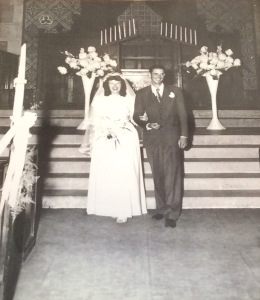 He met Lois Buchen on a blind date when her sorority, Alpha Delta Pi, at the University of California at Santa Barbara, had a dance.
He met Lois Buchen on a blind date when her sorority, Alpha Delta Pi, at the University of California at Santa Barbara, had a dance.
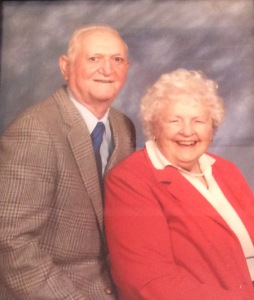 In retirement Stan liked to spend his time in his yard, still the farmer, he “irrigated rather than watered”. He was always tinkering with something . With a mind to make things easier or better, he tinkered with and modified his bar-b-ques, trailer, and motorhome. He loved to camp at Lake Tahoe and spent several weeks every summer at the lake.
In retirement Stan liked to spend his time in his yard, still the farmer, he “irrigated rather than watered”. He was always tinkering with something . With a mind to make things easier or better, he tinkered with and modified his bar-b-ques, trailer, and motorhome. He loved to camp at Lake Tahoe and spent several weeks every summer at the lake.
